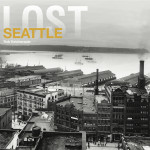Name:
紀伊国坂 きのくにざか
Kinokunizaka, Kii Country Rise
Location:
元赤坂 2-1、千代田区との境
Moto-Akasaka 2-1, on the border with Chiyoda Ward
This article is part of the special feature Akasaka on the Rise. Check it out in my Live Maps Collection.
The official description:
.jpg)
坂の西側に江戸時代を通じて、紀州(和歌山県)徳川家の広大な屋敷があったことから呼ばれた。赤坂の起源とする説がある。
The name stems from the expansive mansion of the Kii (modern Wakayama Prefecture) Tokugawa family, which was on the west side of the rise during the Edo period. There is a legend that it was the source of the name "Akasaka".
Unofficial explanation:
Kii Country Rise begins near the bottoms of Under Sheriff Rise and Kurogu Rise. At the top end it's not far to the top of Shark Bridge Rise.
It's an anomoly. It has a great story. It's bordered by one of the largest greened areas in central Tokyo. Unfortunately that's the Imperial Grounds and Detached Palace, which means the sidewalk abuts a short wall topped by shrubbery. And across the street, instead of simply the attraction of the old outer moat, we have the raised structure of Tollway Number Four. Not particularly photogenic, and one of the least interesting walks in Akasaka.
The stories are good, though. Kii was home to one of two branches of the Tokugawa family set up by Tokugawa Ieyasu (first ruler of the Edo period) to ensure that his descendants stayed in power. Some eighty years later his main line had already failed to provide an heir, and Tokugawa Yoshimune from the Kii branch became Shogun. With his prior experience ruling a major fiefdom, Yoshimune was the most effective ruler since Ieyasu. After his death he was diefied at Hikawa Shrine (氷川神社, Hikawa Jinjya) - next to Hikawa Rise - to the south. The Edo estate of Kii was taken over by the emperor after the Meiji Restoration, and is now the Akasaka Imperial Guest House (迎賓館, Geihinkan), formerly the Detatched Palace, and the Akasaka Imperial Grounds (赤坂御用地, Akasaka Goyouchi), home to several members of the royal family. Surrounding skycrapers have the bottoms of their windows frosted to provide privacy to the gods-on-Earth. [Photo is the underside of Tollway Number Four, which makes a difficult turn to avoid going under or over the holy residences.]
Perhaps the most famous story about this rise is titled Badger (read it here), from Kaidan, which was brought to English in 1904 as Kwaidan by Lafcadio Hearn. The story retained its Japanese name, Mujina (狢). Briefly, it's a ghost story about a man who encounters a mischevous wood spirit along this dark, desolate road trapped between water and wall, and is really scared. End of story. What made it so scary is that many Japanese people truly believed in the supernatural powers and sometimes malevolence of tanuki (raccoon-like), kitsune (foxes), and mujina (badger). Even in the 1970s, Alan Booth found rural folks who honestly were afraid of foxes at night, which he recounts in his great book "The Roads to Sata". Probably if you ask around in the right circles, you'll still find believers today. [Photo is gate to Akasaka Detached Palace]
Another legend about this rise is that it is the source of the name "Akasaka", Red Rise. It's said that before the estate of Kii was established the hillside was covered with red flowers, Akabane, used to make textile dye. The rise took the name Akabane-zaka. Later that was shortened to Aka-saka, or Red Rise. [Photo is Hotel New Otani]
